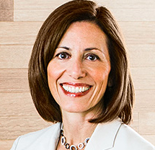- Share Customer Engagement Guidelines from Forrester’s Forum for Marketing Leaders on Facebook
- Share Customer Engagement Guidelines from Forrester’s Forum for Marketing Leaders on Twitter
- Share Customer Engagement Guidelines from Forrester’s Forum for Marketing Leaders on Linkedin
- Share Customer Engagement Guidelines from Forrester’s Forum for Marketing Leaders via email
There’s no doubt we’ve made significant progress as marketers during the past 20 years of evolution, especially shifting to a laser focus on marketing ROI and optimizing our campaign strategies. However, now’s not the time for complacency, and this message was expertly delivered at Forrester’s Forum for Marketing Leaders Beyond the Campaign: Deliver Real-Time Customer Value.
For those of you unable to attend, or simply looking for the highlights from this event, I provided below a summary of my day 1 takeaways as well as key points by several of the speakers from a CMO and content marketing perspective:
- David Cooperstein, VP, Research Director, Forrester @MiniCooper
- Carlton Doty, VP, Group Director, Forrester Research @CarlDoty
- Ann Lewnes, CMO Adobe @alewnes
- Jennifer Geddy, Director, CRM, Sony Electronics @jenmgeddy
- Jeannine Rossignol, VP, Marketing Services, Xerox @J9Rossignol
- Cory Munchbach, Analyst, Forrester Research @corinnejames
- Ryan Skinner, Sr. Analyst, Forrester @rskin11
All insight is sourced, paraphrased and quoted from the respective individuals, except for my personal comments which are in [brackets].
Customer Obsessed Marketing: No Longer an Option
by David Cooperstein, VP, Research Director, Forrester @MiniCooper
- Changing Marketing Landscape –> Welcome to the “Age of the Customer”
- Increased content channels/ease of access (e.g., 200 million iPads sold since 2010)
- Media has changed: consumption, channels (e.g., 79% of people look for a product, service or brand online)
- Branding has changed (e.g., brand exposure channels, customer touchpoints)
- Most successful enterprises will systematically understand and serve the “new” customer
- Competitive dynamics now depend on customer obsession
- Focus on:
- Make real-time data a reality (e.g., move from static to reactive to interactive to adaptive) [David used Waze as a great example of “Adaptive.” Everyone should use the Waze app when driving.]
- Contextualize the customer experience (e.g., focus on the buyers’ journey)
- Build relationships with your customers, regardless of how many you have
- Create content, not advertising [Today, the line between content marketing and native advertising is sometimes blurred. Check out Content Marketing vs. Native Advertising for more insight on this topic.]
- Check out David’s blog for more marketing insights
The Power of Customer Context
by Carlton Doty, VP, Group Director, Forrester Research @CarlDoty
- Brand and experience are inseparable. [Easy in theory, difficult in practice.]
- Carlton offered up a great example of context with Audi’s new dashboard
- Before context –> After context [Great objectives here set out by Carlton]
- campaigns –> interactions
- targeting –> engaging
- customer segmentation –> customer recognition
- media schedules –> customer moments
- messages –> utility [Jay Baer is another great source of insight with his book Youtility. Here’s some recent content marketing related guidance from Jay.]
- transactions –> value exchanges
- Remember that the customer lifecycle is NON-LINEAR (e.g., Ask, Engage, Discover, Explore, Buy, Use –> these don’t happen in order!). . . . and we need to strive for customer interactions that perpetuate value-exchange
- Build a contextual marketing engine to exploit customer context (deliver utility and guide customer into next best interaction)
- How to build that engine:
- Define your strategy (e.g., what’s the soul of your brand, ID your unique interaction cycle)
- Reorganize your processes ( e.g., reconceive role of content to provide utility, embrace agile approaches) [Refer to the Content Marketing Pyramid for a good tactical content creation framework. . . . and note that you can go top down or from the bottom up]
- Adopt your marketing technology portfolio [Good opportunity for marketing operations to team with digital and content marketing teams for improved ROI]
- Accelerate innovation with analytics
- Additional resources:
Marketing Reinvented, A Fireside Chat
with Ann Lewnes, CMO Adobe @alewnes
- Entire marketing profession is being reinvented (e.g., 64% of marketers believe their role will change within the next year but only 14% know how to reinvent themselves)
- Technology is not enough to improve marketing performance and react to change – process!
- Allocate 20% of marketing budget to technology, as a rule of thumb
- “Nobody is doing a good job of mobile marketing today.” (mobile analytics are very different from web analytics, making this a difficult process)
- Keep up with the Adobe Blog to see the latest from Ann
Sony’s Selling Style Revealed
by Jennifer Geddy, Director, CRM, Sony Electronics @jenmgeddy
- Reorganized teams
- Consolidated agencies, from 5 to 1
- Developed a customer experience management group, including teams such as CRM strategy and customer support
- Restated their mission: Use, Advocate, Repurchase
- Relooked at data structure across customer interactions, email databases
- Optimized touchpoints (not just marketing, but customer support as well) –> Strive to connect people to the brand and Sony products, and connect people to themselves
- set goals for customer support to gather more data
- entrepreneurial customer support agents set a high bar (e.g., created their own how to videos)
- Focused on data analytics, modeling: engagement data far more productive than purchase data (e.g., Sony found “engaged households” to be worth 9x in value versus other households)
- Shifted away from email campaigns and broadcast
- Static to dynamic content (e.g., 70+ different versions of email for a customized connection)
- Sony results?. . . Triggered emails make up 1% of total email volume, yet generate 15% of sales
- Engagement is the best form of segmentation – People are unique, but can still be predictable
- Check out Jennifer’s case study on Digitally Connected Consumers
The B2B Marketing Selfie Strategy
by Jeannine Rossignol, VP, Marketing Services, Xerox @J9Rossignol
- B2B marketers are more and more like B2C–> we’re not speaking to companies, we’re speaking to individuals
- Challenges: marketing materials weren’t being used, too much time spent by sales creating materials, purchase decisions were being made before sales showed up on site
- Solutions:
- Understand and tap into the rise of the cycle of advocacy (i.e., buyers go from Belief to Action to Confidence to Advocacy at Scale)
- Optimize content: make your content Searchable, Snackable, Shareable (e.g., Xerox developed 10-12 vignettes from one video)
- Know who you’re talking to with your content marketing and help provide what they need [As marketers we need to focus on answering our consumers questions.]
- Powerful industry marketing (e.g., Xerox developed campaign and account-based marketing strategies focused on specific industries and individuals)
- Develop “owned” media: Xerox partnered with Forbes to create Chief Optimist magazine (digital and print versions) [Great example of Xerox pushing innovation, and going where other companies aren’t.]
- Partnered with Curata to help curate content [Learn how to feed the content beast with curation]
- Partnered with Forbes for content in addition to their own content
- Conducted interviews to develop their own content
- Tapped into user-generated content, including comments and discussions by their community
- Provided each sales person with a copy of the magazine [Nice job by Xerox of sales enablement]
- Bottom line?. . . Don’t be afraid to take risks! [Take note of the importance of this theme. It came up quite often at Social Media Marketing World as detailed in this event wrap up.]
- Be sure to read up on more of Jeannine’s marketing insights from the MarketingProfs B2B Forum and check out our interview with her here
Embrace Customer Life-Cycle Marketing
by Cory Munchbach, Analyst, Forrester Research @corinnejames
- Problems for the “traditional marketer”
- Purchase journeys are fragmented and chaotic
- Connected customers outrun paid ad campaigns
- The technology “toolkit” is outdated
- An old marketing funnel. . . relic
- Opportunities for the new marketer:
- Look at the entire customer lifecycle
- Example: Kimberly-Clark
- Example: Wiley(B2B)
- Provide distributor network with understanding of customers
- Invested in marketing automation
- Focus on the entire brand experience
- Example: Cleveland Clinic – Established a Chief Patient Experience Officer who collaborates with CMO [connect service with marketing]
- Example: Caterpillar – Uses sensors on heavy equipment to alert owners regarding maintenance, increasing potential for customers to be advocates
- Prioritize ongoing relationships (i.e., marketing needs to invest in retention)
- Example: InterContinental Hotels Group (IHG)
- Example: PitneyBowes (B2B) – invested in data scientists to ID cross-sell and upsell opportunities, resulting in greater emphasis on longer term, customer experience
- Help your customers find what they need [This will help SEO also since Google is moving in this direction. See here for more information, refer to How to Survive the Google Tornado]
- Read the latest from Cory on her blog
- Look at the entire customer lifecycle
Boosting Customer Relationships with Content Marketing
by Ryan Skinner, Sr. Analyst, Forrester @rskin11
- Ryan started off with a strong statement to knock folks out of their complacency. . . . “Our brands are under attack” (i.e., in the current information-rich environment, brands are losing a lot of their value)
- Challenges for marketers [herein also lie the opportunities for marketers]
- Customers control media devices –> they’re information traffic controllers and not a captive audience
- Most trusted by customers are digital pull channels
- Fragmentation (of channels and data sources) rewards valuable content
- Solution – Develop a needs oriented, content brand
- Think like a content brand, not a publisher (i.e., your job as a marketer is not done once the content has been consumed)
- Ensure your content creates interest, relevance and relationships
- Key content marketing components:
- Creation
- Understand (e.g., interview), listen to your customers, including analyzing data about them
- Build up your content ecosystem (e.g., use multiple sources for content – curation, creation, crowd-source, user-generated content, syndication)
- Great example –> Citrix weaponizes virtualization best practice
- Audience building
- Content is an ongoing product proposition . . . not a one-time interaction
- Manage your data across different platforms
- Audience becomes a long-term differentiator
- Relationship management
- Use customers’ preferences to target content [marketing automation will place a key role in this process]
- Optimize performance: content level, audience level, business level
- Creation
- Bottom line?. . .Build your structured content brand
- For more information check out: Build your Content Brand by Delivering Customer Value and Ryan’s blog
Did you get a lot of value from these highlights? If so, then you should definitely check out these other resources:
- The Ultimate Social Media Marketing World Wrap Up
- Content Marketing Perspective of Marketo’s Marketing Nation Summit
- The Buyer’s Journey Demystified by Forrester
- Content Marketing Tactics Planner (A survey of 500+ content marketers)
Or contact us directly to learn how Curata’s content marketing and curation software can help feed your content beast.









